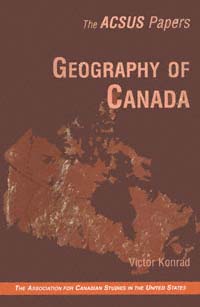| When Canada is considered at all by its neighbors in the United States, Canadian geography usually is regarded as an extension of U.S. geographical patterns. Major regions of the United Statesthe parallel ridges of western cordilleras, the Great Plains, and the Appalachiansextend into Canada. Most Canadians live just the other side of the Great Lakesand the St. Lawrence River, in towns and cities with familiar businesses and similar houses. Comparable rural landscapes are found from coast to coast. In fact, a casual glance across the border confirms that Canadians developed their land in harmony with the United States. |
| A look beyond the borderlands of shared experience and adjusted livelihood reveals adistinct geography characterized by landforms unknown, climates not experienced, and settlement adaptations never required in the contiguous forty-eight United States. Much of Canada's vast expanse of more than 9,968,000 square kilometers (3,851,000 square miles) is anational territory unknown even to its own citizens, most of whom live within 160 kilometers (100 miles) of the U.S. border. Few Canadians have ventured to the Arctic islands of remnantcontinental glaciation, seen the tundra where annually the migratory flocks of the Western Hemisphere breed, experienced the constant daylight of summer north of 60 degrees, or stayedto winter on the grim Canadian Shield. Yet all are touched by a geography differentiated from that of the United States by its northern characteristics, its insularity, and its dependence on the United States. These prevailing themes of Canada's geography describe a land where winter never fully disappears and explain a regional evolution of isolated settlement and a national system of far-stretching lifelines. |
| In Canada there is no escape from the northern character of the country's geography, for all of Canada is either in the north or as W.C. Wonders says, "of the North." Because of its northern position, Canada spends more time frozen than thawed. This condition is prolonged by the high albedo (proportion of radiation reflected by white winter's snow and ice) and the continental Arctic air mass that prevails in the saucer of the Canadian land mass centered on Hudson Bay. Despite maritime air masses that reach Canada from the Pacific and less frequently from the Gulf of Mexico to moderate temperatures and bring precipitation, most of the country is characterized by continental extremes of long, cold, dry winters alternating with short, warm summers. Moderating effects along Pacific and Atlantic coasts are confined by mountain ranges. Only in the Great Lakes region does open water remain into the winter to provide a tempering effect on the land. |
| In the far North, ground as well as water freezes to great depths. Permafrostpermanently frozen groundmay extend to depths exceeding 300 meters (1,000 |
|





